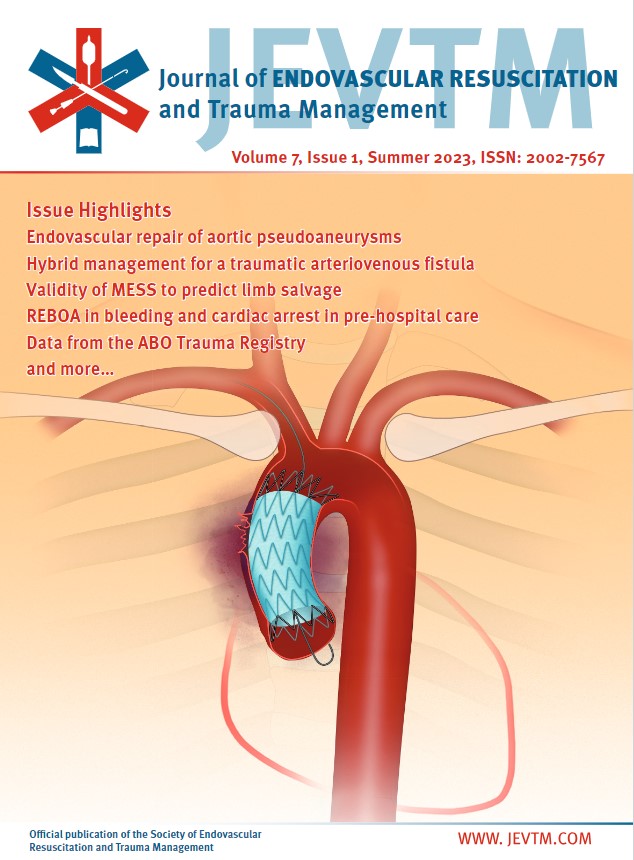Use of Intermittent Aortic Balloon Occlusion: Report from the ABO Trauma Registry
DOI:
https://doi.org/10.26676/jevtm.275Keywords:
Intermittent REBOA, ABO Trauma Registry, Trauma Hemorrhage, TraumaAbstract
Background: Resuscitative Endovascular Balloon Occlusion of the Aorta (REBOA) is a helpful adjunct in the management of hemorrhagic shock due to bleeding in the abdomen or pelvis. Ischemia distal to the occlusion is a concern; intermittent aortic balloon inflation (i-REBOA) is a novel way to achieve decreased ischemia time.
Methods: This study was conducted using data from the multinational ABO Trauma Registry. All patients entered between January 2016 and December 2019 were included.
Results: The sample consisted of 157 patients. There were 57 patients in the i-REBOA group (36%) and 100 in the REBOA group (64%). The groups were similar in gender (P = 0.50), age (P = 0.17), mechanism of injury (P = 0.42), and injury severity score (P = 0.13). The levels of international normalized ratio (INR) (P < 0.01), activated partial thromboplastin time (aPTT) (P < 0.01) and lactate (P = 0.02) were higher in the i-REBOA group. Total balloon inflation times were longer in the i-REBOA group (P < 0.01). Major complication rates did not differ between groups. Mortality rates between groups were similar in the Emergency Department (ED) (3.8% for i-REBOA vs 10.1%; P = 0.17), within 24 hours (43.4% for i-REBOA vs 38.2%; P = 0.54), and at 30 days (63.6% for i-REBOA vs 48.4%; P = 0.07).
Conclusions: The data from this registry show that i-REBOA is currently being used and may allow for longer total balloon inflation times without higher morbidity or mortality rates.
Published
How to Cite
Issue
Section
License
Copyright (c) 2023 Journal of Endovascular Resuscitation and Trauma Management

This work is licensed under a Creative Commons Attribution-NonCommercial 4.0 International License.
Authors of content published in the JEVTM retain the copyright to their works.
Articles in the JEVTM are published under the terms of a Creative Commons CC BY 4.0 license, which permits use, downloading, distribution, linking to and reproduction in any medium, provided the original work is properly cited.




